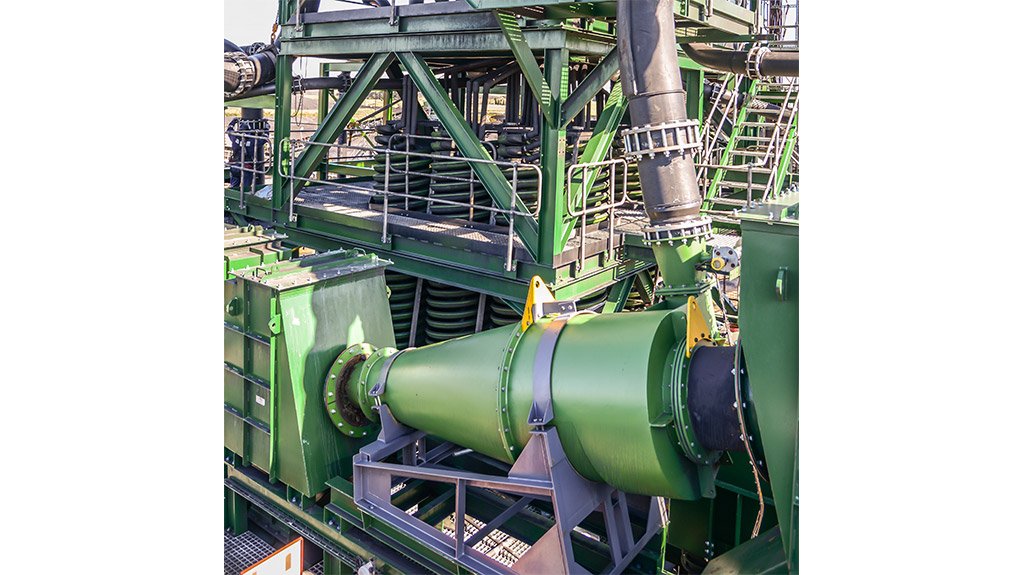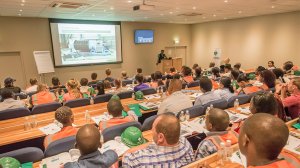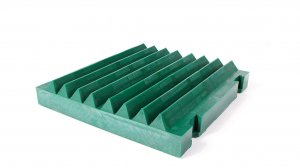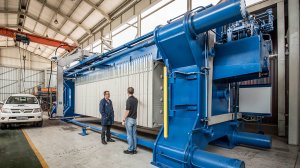Cutting Water Use While Optimising Coal Washing Efficiency
This article has been supplied as a media statement and is not written by Creamer Media. It may be available only for a limited time on this website.
The growing scarcity of water is placing pressure on the coal mining industry in many countries. On the one hand mines must treat more lower quality coal as better coal reserves are depleted which coincides with increasing tonnages, and on the other they must reduce water consumption.
The coal preparation process is normally water-based and uses substantial amounts of water, so optimising its performance will impact positively not only the environment but also the bottom line.
One important response to this pressure has been the move from the traditional technology of bath washers to centrifugal washers like cyclones, as this allows for a higher tonnage per footprint while maintaining optimal separation efficiency.
Depending on the coal characteristics it may be possible to reduce the medium to ore ratio while still maintaining optimal separation efficiency and by doing so reduce the water use in the medium circuit. These types of changes can, however, only be made if the material characteristics, the separation process and factors affecting the separation process are properly understood.
To optimise the effectiveness of cyclones, the parameters surrounding the dense media separation (DMS) cyclone must be well understood. The cyclone’s efficiency is determined by the nature of the feed, by the cyclone’s dimensions and maintenance and by the circuit’s influences on the equipment.
The cyclone appears to be a simple piece of equipment, but the operator needs to understand the physics of how it operates, as well as the mechanism of separation. For this reason, Multotec introduced short courses for customers, addressing topics like principles of separation, operation and fault-finding.
An additional process that is incorporated into modern designs to reduce water loss is the use of coal centrifuges which can reduce the surface moisture content of the dense medium circuit product from 8 to 15% to 5 to 12% depending of the size of particles being processed. A proper understanding of the design of this equipment and factors affecting the performance of centrifuges goes a long way in helping to optimise this process.
The performance of screens is also becoming an important point of focus in coal washing, in the light of rising tonnages per footprint and medium volumes. Factors such as bed depth, spray water addition and the open area on screen panels all affect the performance of desliming screens. Here, it is vital to understand screening principles, so that optimal screen performance is ensured; this not only improves screening efficiency but also conserves water.
With drain and rinse screens, it is crucial to drain higher volumes of medium associated with ever increasing tonnages being processed, to minimise medium losses. While it may not be practical to replace the screen with a larger version, alternative screen panel designs may be an option to improve drainage capability.
When drain sections perform optimally, they reduce the need to add more spray water on the rinse section of the screen, saving water. The Multotec short course on screening principles transfers knowledge to customers and industry on how to achieve this.
The fine coal circuit is also an area deserving of focus, especially with increasing feed tonnages being fed to coal preparation plants. Not only can this circuit become a bottleneck if it is unable to process the full fine fraction stream but as the separation process is mostly water-based this is where much of the water is used. The objective here would be to minimise excessive water use without sacrificing separation efficiencies.
To achieve this objective a proper understanding is required of the limitations of each piece of equipment in the circuit as well as which process factors will contribute the most towards separation efficiency while reducing water consumption.
Again, Multotec’s training courses focus on improving the operation’s understanding of the equipment and how to improve its performance.
This kind of industry training can have a considerable impact on the sector’s water footprint, if operators take the knowledge into their working environments and look proactively for opportunities to reduce water usage.
Comments
Announcements
What's On
Subscribe to improve your user experience...
Option 1 (equivalent of R125 a month):
Receive a weekly copy of Creamer Media's Engineering News & Mining Weekly magazine
(print copy for those in South Africa and e-magazine for those outside of South Africa)
Receive daily email newsletters
Access to full search results
Access archive of magazine back copies
Access to Projects in Progress
Access to ONE Research Report of your choice in PDF format
Option 2 (equivalent of R375 a month):
All benefits from Option 1
PLUS
Access to Creamer Media's Research Channel Africa for ALL Research Reports, in PDF format, on various industrial and mining sectors
including Electricity; Water; Energy Transition; Hydrogen; Roads, Rail and Ports; Coal; Gold; Platinum; Battery Metals; etc.
Already a subscriber?
Forgotten your password?
Receive weekly copy of Creamer Media's Engineering News & Mining Weekly magazine (print copy for those in South Africa and e-magazine for those outside of South Africa)
➕
Recieve daily email newsletters
➕
Access to full search results
➕
Access archive of magazine back copies
➕
Access to Projects in Progress
➕
Access to ONE Research Report of your choice in PDF format
RESEARCH CHANNEL AFRICA
R4500 (equivalent of R375 a month)
SUBSCRIBEAll benefits from Option 1
➕
Access to Creamer Media's Research Channel Africa for ALL Research Reports on various industrial and mining sectors, in PDF format, including on:
Electricity
➕
Water
➕
Energy Transition
➕
Hydrogen
➕
Roads, Rail and Ports
➕
Coal
➕
Gold
➕
Platinum
➕
Battery Metals
➕
etc.
Receive all benefits from Option 1 or Option 2 delivered to numerous people at your company
➕
Multiple User names and Passwords for simultaneous log-ins
➕
Intranet integration access to all in your organisation



























